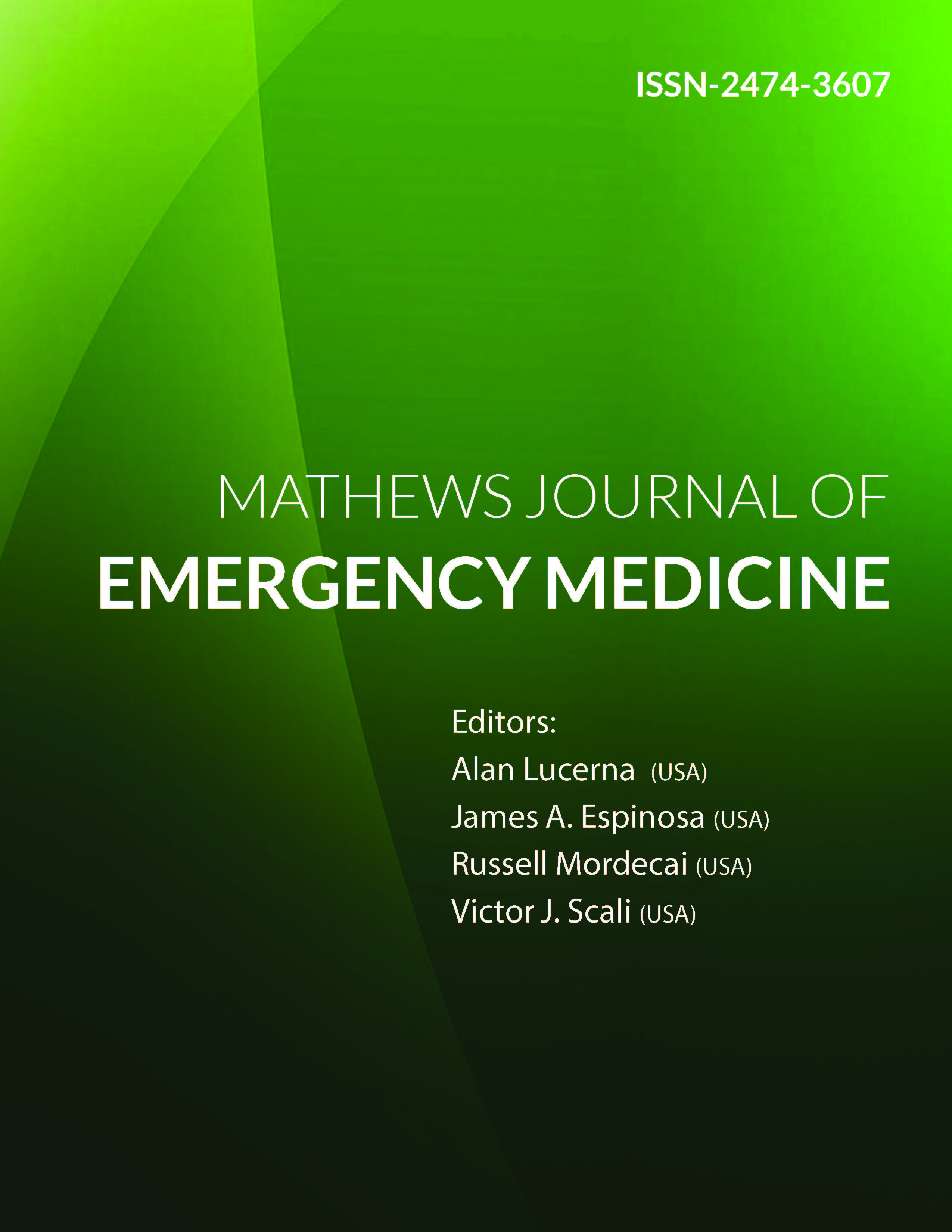
Information Links
Previous Issues Volume 1, Issue 1 - 2016
Contrast-Induced Nephropathy (CIN) and Renal Replacement Therapy (RRT) after CIN, after IV dye in the Emergency Department in Geriatric Patients: Predicting If Renal Replacement Therapy Occurs After The Emergency Room: The Geri PIRATE Study and Baird Hypothesis
James Baird1, James Espinosa1, Victor Scali2
1Department of Emergency Medicine, Rowan University SOM Kennedy University Hospital, Stratford, NJ, USA.
2Program Co-Director, Emergency Medicine Residency, Rowan University SOM, Stratford, NJ, USA.
Corresponding Author: James Espinosa, Department of Emergency Medicine, Rowan University SOM Kennedy University Hospital, 18 East Laurel Road, Stratford, NJ 08084, USA, Tel: +1 646 241 5695; E-Mail: [email protected]
Received Date: 07 Mar 20166
Accepted Date: 21 Mar 2016
Published Date: 05 Apr 2016
Copyright © 2016 Espinosa J
Citation: Baird J, Espinosa J and Scali V. (2016). Contrast-Induced Nephropathy (CIN) and Renal Replacement Therapy (RRT) after CIN, after IV dye in the Emergency Department in Geriatric Patients: Predicting If Renal Replacement Therapy Occurs After The Emergency Room: The Geri PIRATE Study and Baird Hypothesis. Mathews J Emergency Med. 1(1): 006.
ABSTRACT
Iodinated radio contrast agent-induced nephropathy (CIN) is a known complication of radiologic or angiographic procedures. Contrast-induced nephropathy (CIN) is an impairment of renal function, defined as either a 25% increase in serum creatinine (SCr) from baseline or 0.5 mg/dL (44 µmol/L) increase in absolute value, within 48-72 hours after intravenous contrast administration.his study was to look at those questions, with a particular interest in the role of the white coat as a physician identifier.
The primary objective of this study was to attempt to further define and identify the elderly patient population at risk for CIN after computerized tomography studies utilizing intravenous radio contrast media. A secondary objective was to attempt to define and predict which patients developing CIN will require RRT.
Contrast-induced nephropathy, by definition, is a self-limiting disease. However, there is still great concern by ED physicians concerning causing CIN in their elderly patients. Fear of causing damage to the kidneys could lead to doing less accurate diagnostic tests and inferior and less safe workups. The data show that the incidence of CIN in the geriatric population studied requiring dialysis was 0%. Risk factors did not play a major role in causing a larger change from baseline creatinine. Risk factors did not play a major role in causing a larger percent change from baseline creatinine. Lastly, the geriatric kidney might have a counter-intuitive protective effect from IV contrast for an as yet unknown reason. It appears, according to our study, that the older the kidney, the better that kidney tolerates IV contrast. Two of the authors of this study, (JE, VS) have referred to this hypothesis as the “Baird Hypothesis.”
KEYWORDS
Contrast Induced Nephropathy (CIN); Contrast induced nephropathy (CIN) and Geriatric Patients; Contrast Induced Nephropathy (CIN) in Emergency Medicine.